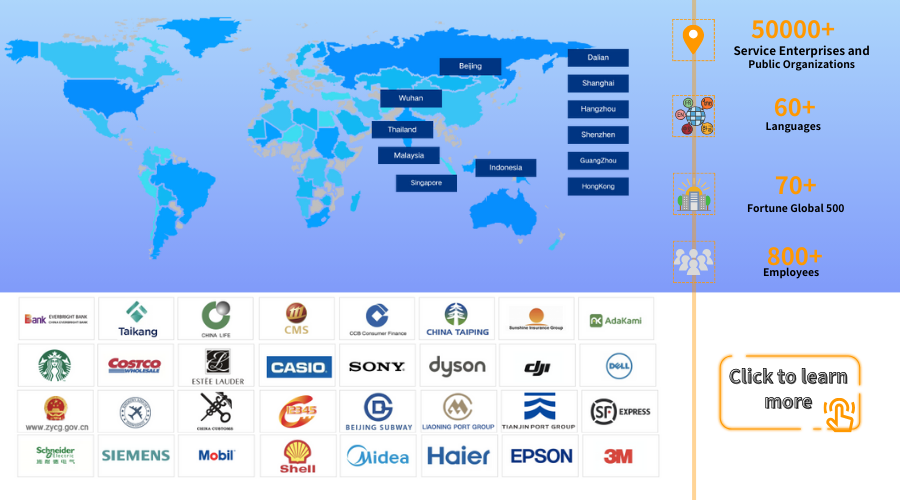Automatic Workflow of Customer Service Work Orders in the Electronics Manufacturing Industry: Building a Full-Link Intelligent Service Network
文章摘要:I. New Service Management Challenges in Industrial Transformation Amidst an annual iteration speed of consumer electronics exceeding 12 months and exponential growth in smart hardware product complexity, the electronics manufacturing industry is facing unprecedented service challenges. Data from a leading smartphone manufacturer shows their daily customer service inquiry volume peaks at over 350,000, with technical consultations involving multi-device connectivity and firmware conflicts accounting for 72%. This shift exposes three core contradictions in traditional service models:
I. New Service Management Challenges in Industrial Transformation
Amidst an annual iteration speed of consumer electronics exceeding 12 months and exponential growth in smart hardware product complexity, the electronics manufacturing industry is facing unprecedented service challenges. Data from a leading smartphone manufacturer shows their daily customer service inquiry volume peaks at over 350,000, with technical consultations involving multi-device connectivity and firmware conflicts accounting for 72%. This shift exposes three core contradictions in traditional service models:
-
Exponential Growth in Technical Complexity: Modern electronic products commonly integrate new technologies like 5G communication, AI algorithms, and multi-sensor fusion, meaning a single fault may require cross-verification across hardware, software, and network dimensions. Statistics from a smart speaker company show 43% of work orders require cross-departmental collaboration to resolve.
-
Full Lifecycle Service Demand: Service requirements now span the entire product lifecycle, from compatibility testing in the R&D phase, quality traceability in mass production, to OTA upgrade support in the after-sales phase. A wearable device manufacturer, due to the lack of a cross-phase work order traceability mechanism, saw the same issue recur 6 times on the R&D side.
-
Global Service Network Coordination: A major home appliance giant operates in 128 countries, with its service network involving 15 types of entities including owned service centers, third-party repair providers, and regional spare parts depots. The traditional manual dispatch model resulted in an average overseas work order handling cycle of 9.2 days and a 19 percentage point drop in customer satisfaction.
II. Core Scenarios and Restructuring Needs for Work Order Flow in Electronics Manufacturing
(A) Intelligent Dismantling and Tiered Processing of Technical Inquiries
Electronics manufacturing work orders exhibit "Three High" characteristics:
-
High Technical Density: A drone company's statistics show 68% of work orders involve multi-protocol communication (e.g., RTK+4G dual-mode positioning).
-
High Version Sensitivity: An automotive electronics company releases 12 ECU firmware versions monthly, leading to a surge in compatibility issues.
-
High Hardware-Software Coupling: An AR glasses company found that 75% of display abnormalities require simultaneous troubleshooting of optical modules and rendering algorithms.
Traditional handling models lead to:
-
First Contact Resolution (FCR) rate below 60%, with a 41% secondary transfer rate.
-
Expert resources consumed by 30% repetitive issues.
-
Knowledge base updates lagging behind product iteration cycles (average lag of 17 days).
Restructuring Need:
Establish an intelligent dismantling mechanism based on the product BOM structure, automatically decomposing complex work orders into standardized sub-tasks (hardware detection, software debugging, protocol configuration, etc.), and correlating historical solutions via a knowledge graph.
(B) Real-Time Response Network for Supply Chain Collaboration
Electronics manufacturing service involves four-dimensional "R&D-Manufacturing-Logistics-Service" collaboration:
-
Defect Root Cause Tracing: Requires integrating 12 data sources like AOI inspection data, SMT process parameters, and incoming material inspection records to achieve precise localization from client-side failure phenomena to PCBA defect points. A PCB manufacturer, through work order data backtracking, reduced the open circuit defect rate of a batch product from 0.28% to 0.03%.
-
Intelligent Spare Parts Dispatch: Requires building a three-dimensional dispatch model based on geofencing, inventory levels, and logistics lead times. After implementation by a home appliance company, spare parts fulfillment rate increased from 82% to 97%, and emergency transfer costs decreased by 34%.
-
Quality Improvement Loop: Requires automatically feeding typical work order data into FMEA analysis systems to drive design changes. A chip manufacturer using this mechanism reduced the failure rate of a specific packaging type from 15ppm to 3ppm.
(C) Deep Value Mining and Feedback from Service Data
Electronics manufacturing work orders hold three strategic values:
-
Design Optimization: An audio company discovered through work order analysis that 35% of current noise issues stemmed from ESR parameter deviations of specific capacitors.
-
Supply Chain Risk Control: A panel manufacturer identified batch defects in a supplier's polarizer through clustering of faulty work orders.
-
Customer Operations: A robotics company developed an industrial algorithm package to meet B2B customer needs by mining service data.
But in traditional models:
-
83% of work order data is not stored structurally.
-
Service data is completely siloed from PLM systems.
-
Customer profile completeness is less than 35%.
Electronics Manufacturing Customer Service Work Order Automatic Flow: Building a Full-Link Intelligent Service Network
III. Innovative Architecture and Implementation Path for an Intelligent Work Order System
(A) Omni-Channel Intelligent Access and Semantic Understanding
-
Multi-modal Work Order Creation: Supports speech-to-text (accuracy ≥99%), intelligent fault video clipping (keyframe extraction), automatic log file parsing (error code categorization). A smart terminal enterprise saw a 70% increase in work order creation efficiency after implementation.
-
Deep Semantic Understanding: Uses BERT + industry knowledge graph for precise parsing of technical terms (e.g., distinguishing "GPS drift" from "AGPS定位延迟" - AGPS定位延迟 translates to AGPS positioning delay). A automotive electronics company improved work order classification accuracy from 78% to 92% after application.
-
Intelligent Pre-processing: Automatically links device records (e.g., purchase date, warranty status). Pre-fills solutions (matching historically similar work orders). An IoT enterprise increased simple issue handling efficiency by 65% after implementation.
(B) Dynamic Routing and Supply Chain Collaboration Engine
-
Intelligent Routing Algorithm: Builds an allocation model based on 8-dimensional parameters:
-
Problem complexity (Hardware/Software/Protocol)
-
Product lifecycle stage (R&D/Mass Production/EOL)
-
Customer SLA level (Enterprise customers prioritized)
-
Technician skill matrix (NXP certification holders prioritized)
-
Regional spare parts inventory (Prioritize regions with stock)
-
Historical handling records (Avoid repeated assignment)
-
Current load situation (Work order backlog)
-
Service cost optimization (Incorporating travel expenses)
A medical electronics company achieved a 58% increase in expert utilization and raised FCR to 87% after application.
-
-
Supply Chain Collaboration Dashboard:
-
Real-time display of node statuses (Testing/Repairing/Shipped).
-
Automatic ETA calculation (Integrated logistics API).
-
Supports simulation for spare parts transfer decisions.
A home appliance company improved cross-organizational collaboration efficiency by 40% after implementation.
-
(C) Service Data Middle Platform and Value Realization
-
Knowledge Graph Construction: Transforms 3 million+ work orders into structured knowledge (including 150,000+ fault tree models). Supports AR remote guidance (technical experts can annotate 3D circuit diagrams). Develops self-service diagnostic tools (customer self-resolution rate increased to 38%).
-
Customer Value Prediction: Integrates device usage data (daily average usage time/feature utilization rate). Correlates service history (number of repairs/replaced parts). Predicts equipment lifecycle (remaining value assessment). A printer enterprise improved high-value customer identification accuracy by 65% after application.
-
Service Productization: Packages typical solutions as API services (e.g., protocol compatibility detection). Develops subscription service packages (e.g., monthly device health reports). An industrial controller company grew annual service revenue by 220% through this model.

IV. Implementation Methodology and Benefit Validation
(A) Phased Implementation Strategy
-
Foundation Building Phase (0-3 months): Complete system deployment and multi-channel integration. Establish standard work order templates and SLA rules. Develop basic routing algorithms.
-
Intelligence Upgrade Phase (4-6 months): Deploy NLP classification engine. Integrate supply chain system data. Launch Knowledge Graph version 1.0.
-
Ecological Integration Phase (7-12 months): Build customer prediction models. Develop service-marketing linkage scenarios. Achieve AI-assisted decision-making.
(B) Quantifiable Value Improvement
| Metric Dimension | Pre-Implementation | Post-Implementation | Improvement |
|---|---|---|---|
| First Contact Resolution | 59% | 88% | 49.2% |
| Average Handling Time | 16.5 hours | 4.1 hours | 75.2% |
| Spare Parts Turnover Rate | 1.6 times/year | 3.1 times/year | 93.8% |
| Customer NPS Score | 64 points | 87 points | 35.9% |
| Service Cost Ratio | 8.3% | 5.4% | 34.9% |
(C) Benchmark Case Analysis
After implementing the work order system, a consumer electronics giant achieved:
-
Service Efficiency: Daily handled work orders per agent increased from 52 to 135.
-
Quality Improvement: Driven by work order data, screen light leakage rate for a flagship product decreased from 0.45% to 0.11%.
-
Value-Added Services: The "Device Health Management" service developed based on service data drove a 41% growth in insurance sales.
-
Cost Optimization: Annual service costs reduced by 28 million RMB, with logistics costs down 43%.
V. Future Evolution Directions
(A) Digital Twin Service Network
-
Product Mirror: Create a digital twin of the product for virtual fault reproduction and simulated repair.
-
Predictive Service: Warn of potential faults 96 hours in advance based on work order data and device sensor data.
-
Remote Collaboration: Support multiple experts simultaneously accessing the digital twin environment for consultation.
(B) Service Ecosystem Blockchain
-
Trusted Storage: Store maintenance records and spare parts traceability information on-chain for full service process transparency.
-
Smart Contracts: Automatically execute service SLA terms (e.g., compensation for timeout).
-
Ecological Collaboration: Establish cross-enterprise service resource sharing mechanisms.
(C) Service Agent Evolution
-
Autonomous Decision-Making: The work order system gradually gains capabilities for self-diagnosis, solution auto-generation, and resource auto-scheduling.
-
Continuous Learning: Share industry knowledge while protecting data privacy through federated learning technology.
-
Human-Machine Collaboration: Build a new model where "AI handles 80% of standard problems + experts handle 20% of complex problems".
VI. Conclusion: A Paradigm Shift in Service Networks
The automatic flow mechanism of enterprise work order systems is driving a fundamental transformation in the service models of the electronics manufacturing industry. When systems can perceive device status in real-time, precisely dispatch global resources, and continuously create service value, customer service is no longer the endpoint of product delivery but the starting point of value creation. In this transformation, enterprises that pioneer the construction of intelligent service networks will gain a strategic advantage in the new industrial revolution, truly achieving the strategic leap from "manufacturing products" to "operating services."
Udesk's Enterprise Work Order System enables teams to complete tasks efficiently and helps businesses rapidly improve productivity. It integrates with over 20 communication channels worldwide, connecting you seamlessly with your global customers. It allows work orders to flow and be assigned automatically based on business needs, ensuring precision and efficiency. Each work order contains not only rich business information but also integrates relevant data across multiple dimensions such as customers, companies, and operations, providing comprehensive information at a glance!
The article is original by Udesk, and when reprinted, the source must be indicated:https://my.udeskglobal.com/blog/automatic-workflow-of-customer-service-work-orders-in-the-electronics-manufacturing-industry-building-a-full-link-intelligent-service-network.html
Enterprise work order systemFunctions of enterprise work order systemSignificance of enterprise work order system

 Customer Service& Support Blog
Customer Service& Support Blog


